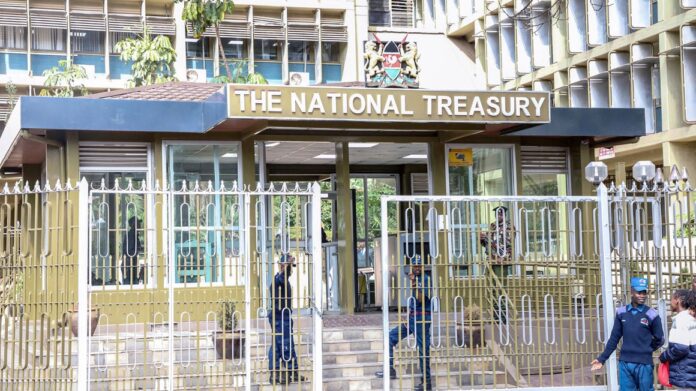The stock of Kenya’s overall debt has crossed the Ksh10 trillion ($68 billion) mark on increased borrowing during President Willam Ruto’s first year in office, burdening the taxpayer with more repayment obligations.
New data from the Treasury and the Central Bank of Kenya (CBK) place Kenya’s debt stock at Ksh10.189 trillion ($69.3 billion) at the end of June 2023 in contrast to Ksh8.579 trillion ($58.4 billion) in June last year.
The rate of debt accumulation has surpassed previous projections by the National Treasury. For instance, the Treasury had in its 2023 Budget Policy Statement estimated the size of the country’s debt stock to stand at Ksh9.412 trillion ($64 billion) at the end of June 2023.
The debt stock is also already above the Ksh10.13 trillion ($69 billion) that had been projected for June 2024 — mirroring the faster-than-expected accumulation of public debt and borrowing.
The split of Kenya’s public debt stands in favour of external borrowing at Ksh5.452 trillion ($37.1 billion) against Ksh4.736 trillion ($32.2 billion) in the domestic account.
The share of external debt stands at 53.51 percent of total debt against 46.48 percent in domestic borrowing with the portion of foreign loans growing from a low of 50.01 percent in June 2022 while the share of domestic loans has decelerated from 49.98 percent over same period.
The faster growth in external loans is partly attributable to a weaker exchange rate with the shilling having shed nearly 20 percent of its value against the US dollar on a year-to-date basis.
At the same time, while Kenya has largely been locked out of the international capital markets, the country has been able to keep the taps open from a multilateral financing perspective with lenders such as the World Bank and the International Monetary Fund (IMF) remaining crucial to budget support.
For instance, the IMF approved the disbursement of Ksh61.1 billion ($415 million) to Kenya in July bringing its cumulative disbursements to the country to Ksh300.1 billion ($2.04 billion) since April 2021 under a multi-year programme.
The Washington-based lender further approved the disbursement of Ksh81.1 billion ($551.4 million) under a new plan dubbed the resilience and sustainability facility to support Kenya’s efforts in combating the effects of climate change.
The Treasury is expected to continue leveraging concessional funding from multilateral institutions to plug the financing gap in 2023/24.
The upside to concessional financing has seen the Treasury revise its estimate upwards for net foreign financing to Ksh449 billion ($3.1 billion) from Ksh131 billion ($891.2 million).
The greater prospects for foreign financing have seen the exchequer cut its dependence on domestic financing with the target coming down to Ksh415.3 billion ($2.8 billion) from the previous estimate of Ksh587.4 billion ($4 billion).
Despite the faster-than-expected growth in the country’s debt stock, the Treasury says the government remains committed to fiscal consolidation, which it expects to achieve largely from enhanced revenue mobilisation.
The National Assembly recently amended the Public Finance Management Act of 2012, revising Kenya’s debt ceiling from a cap of Ksh10 trillion to a moving target/placeholder of no more than 55 percent of GDP and present value terms.




